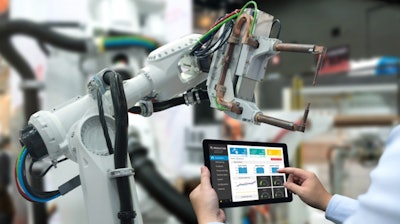
Form.com describes itself as a provider of flexible mobile data collection and process optimization solutions. Essentially, the company saw revenue increase by 20 percent last year by providing manufacturers with customizable apps designed for specific worker roles or tasks. The growing need for these mobile solutions stems from a number of factors.
Among them is the ability obtain plant floor data more quickly, and to organize this data in such a way that it can help improve long-term decisions and planning. According to the company, more than 400 organizations and tens of thousands of workers use Form.com as part of their daily workflow. To obtain some insights on the impact of mobile technology within the manufacturing sector, we recently sat down with Alexander Zagvazdin, vice president at Form.com.
Jeff Reinke, IEN: The use of mobile technology in manufacturing continues to grow. What do you think has been the leading contributor to this overall growth?
Alexander Zagvazdin, Form.com: There are a number of factors that we're noticing:
- Ubiquitous connectivity across manufacturing facilities that enables instant access to critical information right in the field.
- A younger workforce entering the job market and demanding user-friendly productivity tools, such as the apps they're used to using in their daily lives.
- Software vendors catching up and providing the mobile experience for the tools that were previously desktop only (think about platforms such as SAP and Salesforce).
- IT becoming more willing to adopt mobile, thanks to advancements in MDM solutions and mobile security.
- Organizations increasingly relying on data to make decisions and interested in gaining visibility into the data collected from the field to improve operations.
JR: How do you think the growth in Bring Your Own Devices has impacted the manufacturing sector?
AZ: BYOD has definitely pushed organizations towards faster adoption of mobile technology, as it eliminates one of the most costly components on the IT budgets when it comes to implementing the mobile strategy: the mobile devices. Thanks to recent advancements in the Mobile Device Management space and mobile security, BYOD is not viewed as such a high risk by IT organizations anymore.
JR: What do you think are the key factors to consider in constructing a user-friendly app?
AZ: There are a number of factors that are specifically important for manufacturing:
- Large UI controls that prevent fat-fingering information, especially for people working in gloves and under harsh weather and environmental conditions.
- The use of high-contrast colors for better visibility.
- High speed performance able to process large amounts of data without lags.
- Offline capabilities, as connectivity may be spotty in areas where work needs to be performed.
JR: As baby boomers transition out of the workforce and millennials are promoted up, how do you think this will impact the use of mobile technology in the industrial sector?
AZ: We already see multiple customers choosing to use technology as a way to attract a younger workforce to jobs in manufacturing. Using mobile technology is important as a way to achieve significant productivity gains, but it is also boosts an organization’s ability to compete for younger workers who are more comfortable working on digital devices and platforms.






















